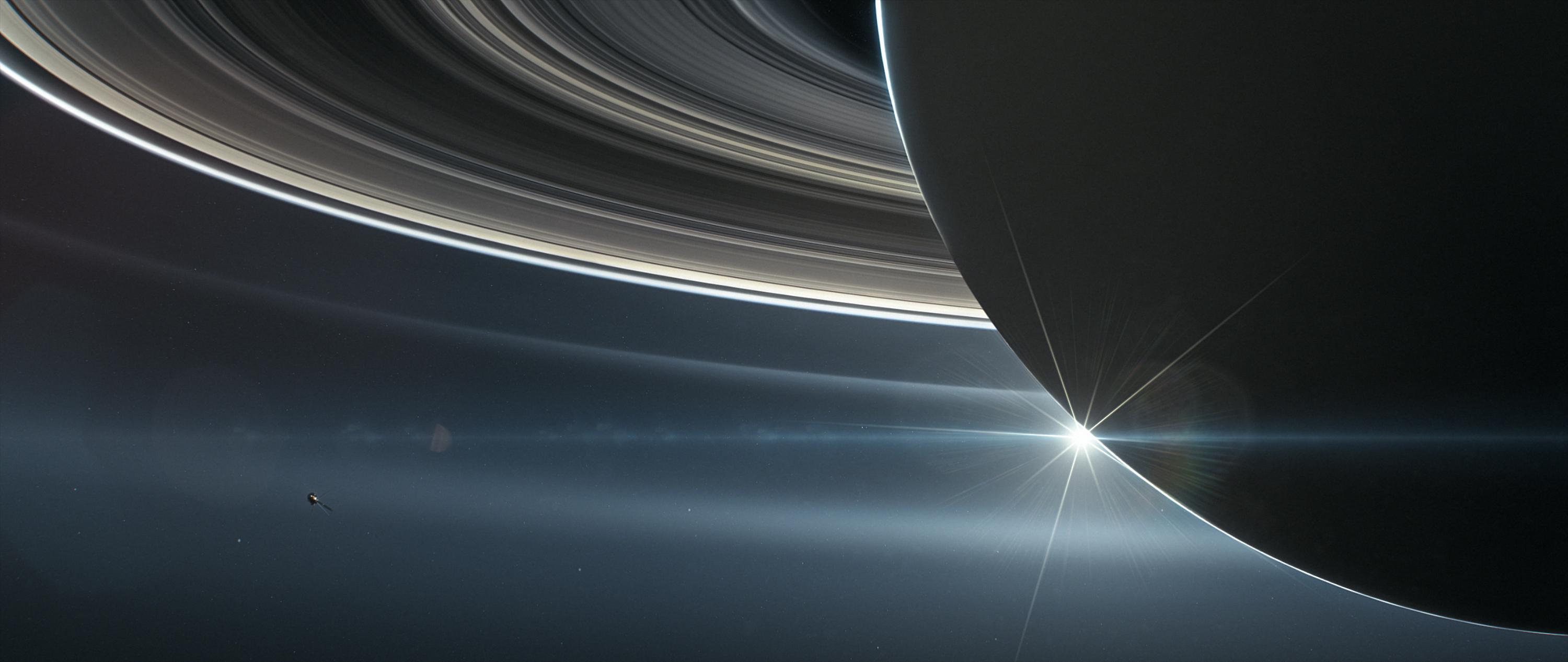Press Release
Cassini’s ‘Grand Finale’ Yields Findings From Inside Saturn’s Rings
The Cassini spacecraft had explored Saturn and its many moons over the course of 13 years, but despite having exceeded its original length and objectives, the historic NASA mission had one more act before its 2017 curtain call.
In 22 last “dives” executed by Cassini, the mission took a risk and went where no spacecraft had dared venture: the region between Saturn and its distinctive rings. These bold, final months — dubbed the Grand Finale — provided researchers with a trove of discoveries, some of which are covered in the Oct. 5 issue of the journal Science and in companion articles posted online by Geophysical Review Letters (GRL).
For 40 years, calculations based on remote observations indicated that Saturn’s magnetic field carried ions and charged dust grains from the rings to the planet’s mid latitudes. But the Grand Finale produced the first direct measurements of the narrow region below the rings and led to a startling discovery: fast-moving molecules and particles smaller than two nanometers streaming along the plane of the rings into Saturn’s atmosphere by another process known as atmospheric drag.
Scientists from the Johns Hopkins Applied Physics Laboratory (APL) in Laurel, Maryland, are among the teams contributing to this discovery. Don Mitchell is lead author on one of the Science papers and leader of the APL-built Magnetospheric Imaging Instrument (or MIMI, originally proposed and led by APL’s Tom Krimigis) that discovered these particles through a chance observation. Mitchell realized that there were both charged and even greater numbers of neutral dust grains in the planet’s equatorial atmosphere. “We weren’t looking for it,” said Mitchell. “We weren’t expecting to see dust in this region [of Saturn].”
To add more intrigue to the finding, Mitchell determined the nanometer-sized dust was coming from Saturn’s innermost ring — the D-ring — something that experts initially thought highly unlikely.
Cassini’s mass spectrometer, INMS, measured the composition and structure of Saturn’s atmosphere, but also complemented MIMI’s observations of the particle influx. In a GRL paper, Mark Perry, a member of the INMS science team, reports that most of the mass pulled from the rings is composed of molecules and particles even smaller than those measured by MIMI. Unlike the rings, which are 95 percent water, hydrocarbons comprise most of the material falling from the rings into Saturn. “We now can explain the startling amount of material falling into Saturn, but the hydrocarbons are still mostly a mystery to solve,” Perry said.
At the current rate, the inner rings would last only tens of thousands of years, much less than the age of the rings, which are at least 30 million years old. INMS measurements show a variation in the amount of material dragged from the rings. There is a tentative link between the amount of material and clumps that appeared in 2015 on the inner edge of the D-ring, suggesting that the current, possibly unsustainable flux may be temporary.
These newly discovered particles and processes alter the evolutionary landscape of the rings and provide an exciting, rich field for research aimed at understanding the origin and history of the rings. Where did the material originally come from? Was it from a one-time event? How long ago? Has it always occurred, or is this something unique to our time period? The discovery and subsequent broader questions can tell us more about the solar system, said Mitchell. “If it happens on Saturn, it could potentially also occur at other planets and in other stellar systems,” he said.
Peter Kollmann, a member of the MIMI science team, shared first-authorship of the Science paper reporting the discovery of an inner radiation belt passing through Saturn’s D-ring. The belt contains highly energetic protons — several giga-electron volts worth — much higher than what had previously been observed in the well-known outer radiation belt that extends around the planet. “It wasn’t clear that we would find a radiation belt there or if the radiation would be absorbed by the D-ring,” Kollmann said, adding that the fact the inner radiation belt is able to exist with the inner ring under unique conditions makes it a fascinating find.
“Radiation is found throughout our solar system,” says Kollmann, “We cannot reproduce such processes here on Earth, but observing it in space, and getting that opportunity to do so at Saturn, under conditions that we haven’t been able to find anywhere else, gives us greater insight into radiation physics.”
The papers published in Science are:
- “Dust grains fall from Saturn’s D-ring into its equatorial upper atmosphere”
- “Chemical interactions between Saturn’s atmosphere and its rings”
- “A radiation belt of energetic protons located between Saturn and its rings”
The papers published in GRL are:
- “Material Flux From the Rings of Saturn Into Its Atmosphere”
- “Energetic Electron Pitch Angle Distributions During the Cassini Final Orbits”
- “Heliospheric conditions at Saturn during Cassini’s Ring-Grazing and Proximal Orbits”
- “Energetic neutral and charged particle measurements in the inner Saturnian magnetosphere during the Grand Finale orbits of Cassini 2016/2017”
- “Thermal Structure and Composition of Saturn’s Upper Atmosphere from Cassini/INMS Measurements”
- “Models of Saturn’s Equatorial Ionosphere Based on In Situ Data From Cassini’s Grand Finale”
- “The Ion Composition of Saturn’s Equatorial Ionosphere as Observed by Cassini”
- “Saturn’s innermost radiation belt throughout and inward of the D‐ring”
- “Sources, sinks and transport of energetic electrons near Saturn’s main rings”
The Cassini-Huygens mission is a cooperative project of NASA, the European Space Agency and the Italian Space Agency. JPL, a division of the California Institute of Technology in Pasadena, manages the Cassini-Huygens mission for NASA’s Science Mission Directorate, Washington. The Cassini orbiter was designed, developed and assembled at JPL. Learn more about the Cassini mission and its Grand Finale at https://saturn.jpl.nasa.gov/.
